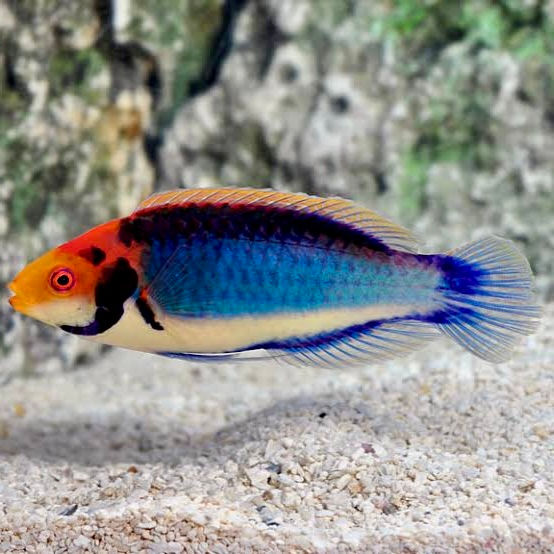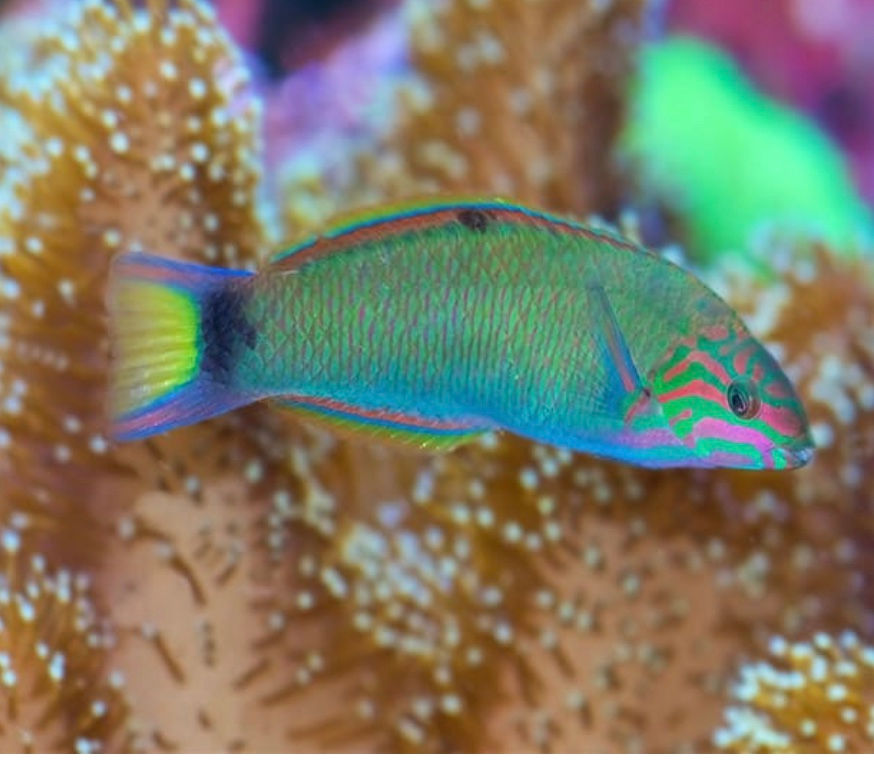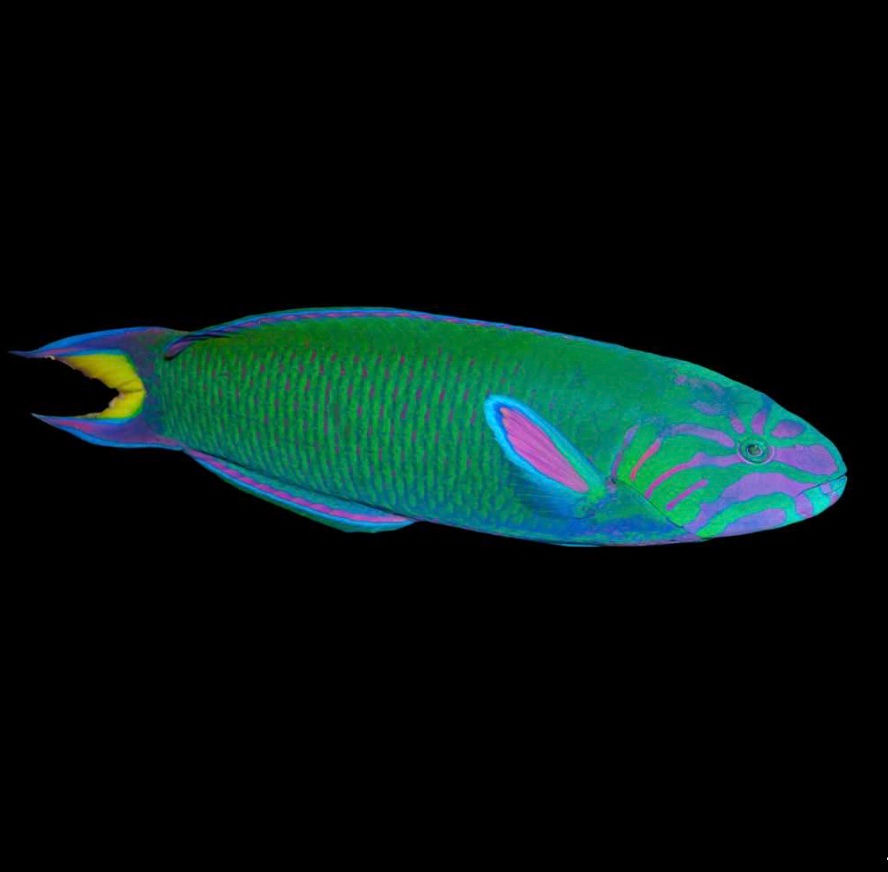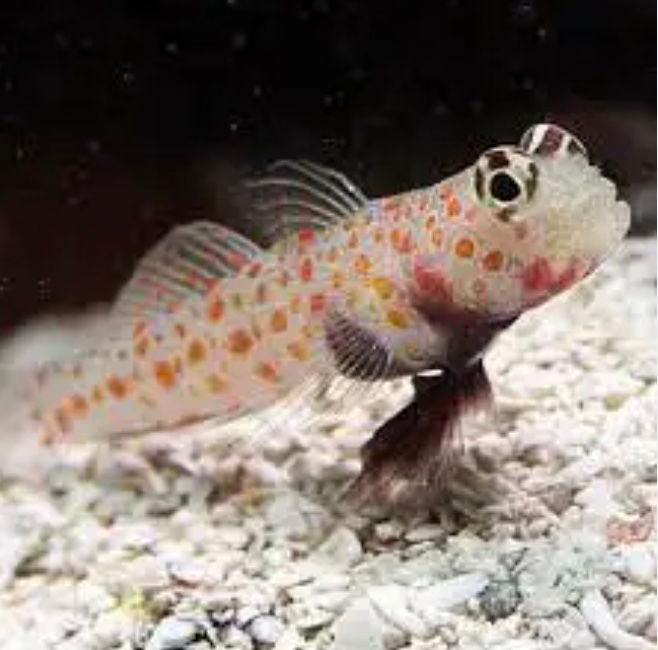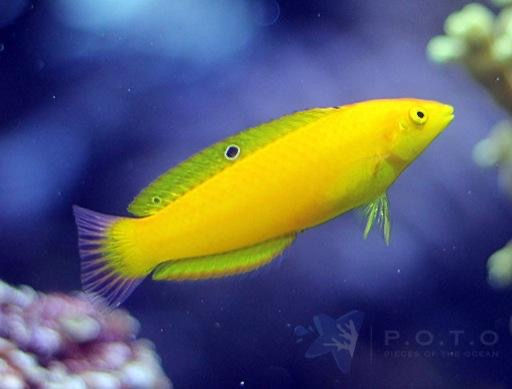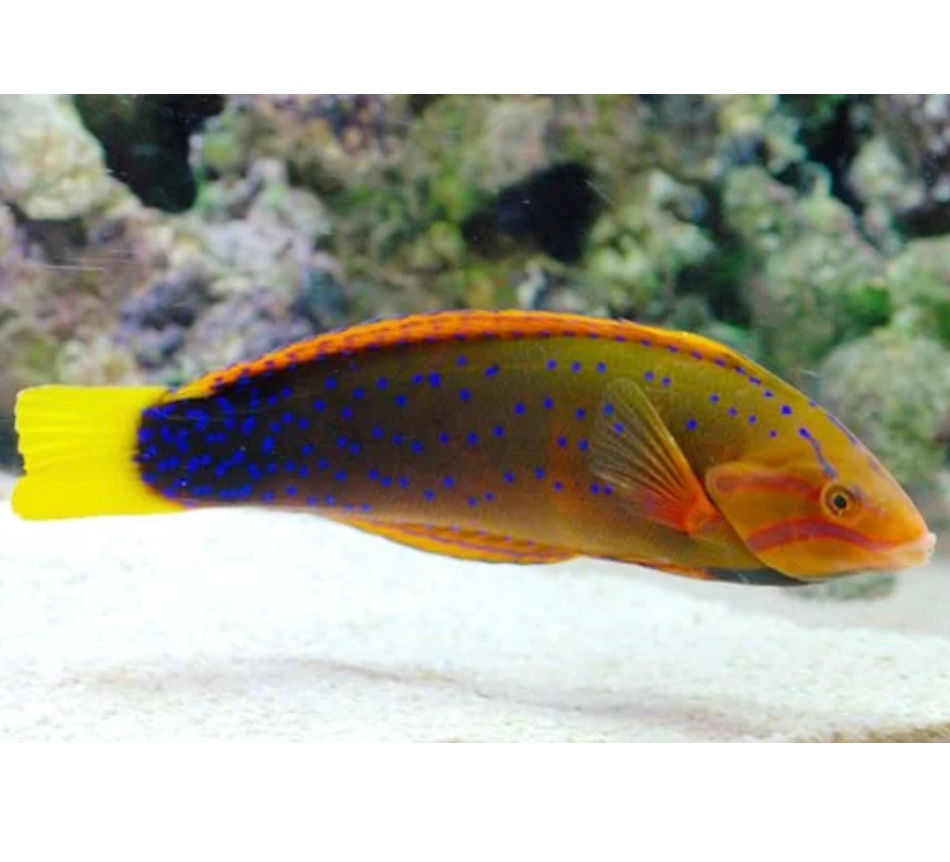Clean-Up Crew
A clean-up-crew (CUC) is a collection of utilitarian invertebrates and fish that are added into a saltwater aquarium with the specific intent of helping scavenge the tank for detritus, clean up leftover food, and graze on nuisance algae. Ultimately, these animals play a critical role in the enclosed aquarium ecosystem. Think of it sort of like a "keystone" species, without the clean-up crew everything else in the tank is worse-off or unable to thrive.
While there are a variety of additional clean-up-crew animals available in the hobby, these animals are listed specifically because they are the BEST choice for your new saltwater aquarium owners. There are a handful of additional animals like sea stars, urchins, and sea cucumbers which can be very effective but are not the best choice for a brand new aquarium and/or first-time tank owner. These specialized clean-up-crew critters have more specific dietary requirements and can be a bit more sensitive.
If you would like to learn more about each of the particular species listed above, we have a detailed article linked below which may help you decide exactly which options you want for your tank. Keep in mind the idea is to add some animals from each of the various categories to target different areas of the tank.
What & Where They Clean
Each of the clean-up-crew animals has a niche based on their particular diet and area of the tank they will target. They will clean up leftover food, decaying organic matter (dead animals), fish waste, and algae. They can scavenge the surface of the sand bed, sift through the sand bed, clean the glass, and scavenge among the rocks. Pretty much anywhere you put the animals, they will go to work without discretion.
The Limits Of A Clean-Up-Crew
CUC animals do a great job supporting your efforts in keeping the tank clean and healthy but cannot do it all by themselves. Think of them like teammates that "fight the good fight" alongside you. Filtration and maintenance are still a critical part of keeping your aquarium looking good and healthy.
-
They cannot get rid of serious nuisance algae problems 100%
-
They won't eliminate the need to scrape your glass walls
-
They cannot keep the sand bed clean all by themselves
Common Mistakes
Too much too soon: Clean-up-crew animals need food to survive. If the tank is still very new with very little algae and food waste then you need to be conservative with what you add. It's not a terrible idea to gradually increase the clean-up-crew as you stock your tank. With more fish comes more food and waste which also means more nuisance algae will grow. You will be better able to support a larger population of CUC animals with more algae and food waste. If your CUC animals starve and die in the tank right away, you are only creating more problems for yourself and possibly creating a toxic environment if ammonia and/or nitrite shows up.
Too little too late: If you allow algae and waste to stack up without any clean-up-crew animals, you might find it tough to recover. Start adding clean-up-crew animals early in the game but don't overdo it. It's best to be conservative at first and you can always add more if you need them.
Most definitely not a silver bullet. These animals will not replace the need for regular maintenance.
Clean-up-crew animals don't live forever and will require replacement over time. Some live longer than others but adding a few new snails and crabs once a year is a pretty common practice to ensure your clean-up-crew remains robust.
When To Add
Some hobbyists have strong feelings about when exactly is the best time to add a clean-up-crew animals. It is a delicate balance that will be very particular to your tank. Most will agree it is safe to start adding animals at the first sign of nuisance algae growth in the aquarium. Just don't wait too long and be sure you're manually cleaning the tank all the while.
Recommended Clean-Up-Crew For Small Aquariums
Adding a good variety is the key to an effective. Here is a great place to start for aquariums up to +/- 20 gallons. If your tank is larger, you have room for more and an even greater variety, simply add more as your tank matures.
-
5 herbivorous snails
-
5 carnivorous snails
-
10 small hermit crabs
-
1 cleaner shrimp
When it comes to utilitarian fish that graze upon algae in the tank, you have to be a bit more careful. You want to be sure your aquarium is large enough and well established enough to support that animal. Something like a tang is going to get quite large and should not be kept in tanks smaller than +/- 70 gallons. Sand-sifting gobies can quickly starve in smaller tanks and can make a mess by stirring up large areas of the sand bed constantly. Rabbitfish are excellent algae eaters but require a tank of about 40 gallons and are venomous. Blennies are great fish to use in a smaller tank but should only be added after you have algae growing in the tank and you need to be sure to support the fish's diet with herbivorous foods like seaweed.
Having an assorted cleanup crew of invertebrates for your saltwater or reef aquarium will help keep your rock work and substrate clean. There are also some awesome fish that can be employed to keep the tank tidy alongside your classic CUC. We typically refer to these fish as "utilitarian" or functional fish because they play a vital role in keeping the tank clean and consuming algae and waste.
Recommended FISH:
Starry, Sailfin (AKA Lawnmower), Bicolor, and a variety of other "comb-tooth" blennies can add character to any aquarium while also playing a part in algae control. Throughout the day they will graze on algae growing on the rocks and glass panels of the aquarium. They have quite the personality in your aquarium too, perching on rock outcroppings in between meals and sometimes pestering their tankmates who encroach on their territory. They are also known for jumping, so we would suggest having a lid on the aquarium if kept.
While most Blennies won't cause a problem in your reef tank, they can be aggressive toward other fish that attempt to graze on the rocks, especially other blennies. It's best to keep one per tank to avoid this aggression. Outside of that, they make great members of a peaceful community reef tank.
There is a wide variety of Centropyge species available to aquarists. These "Dwarf Angelfish" include fish like the Cherub, Coral Beauty, Flameback, Lemonpeel, and Potter’s Dwarf Angel. All centropyge species can serve as an effective means to control macroalgae. While they are not commonly thought of as "utilitarian fish" they can certainly be helpful if macroalgae start to encroach on your display.
They are omnivores and some species have been known to eat coral polyps so you should proceed with caution if you're keeping a reef tank. Captive-bred fish dwarf angels are on the rise too and will make far better tankmates compared to wild-caught angels because they are less likely to eat corals and will simply be better adapted to life in an aquarium.
They do require lots of hiding places and can be sensitive to stress. They should not be housed alongside other dwarf angelfish and can show aggression toward tankmates over territory and competition for food. Well-established aquariums over 40 gallons are recommended to help reduce stress and keep these fish happy.
Sandsifting Gobies can help keep the substrate clean by the mouthful. Diamond head, Twin Spot, and Tiger Watchmen gobies spend their day sifting through live sand looking for tasty crustaceans to eat. This helps keep the sand oxygenated, free of algae and releases detritus into the water column to be filtered out.
You should have a sand bed of at least 2-3" in depth throughout the tank with rubble and rock work for them to make a burrow. They can make a mess of the sand, constantly rearranging it and covering any unsuspecting coral frags so they are not the greatest addition for smaller tanks under 30 gallons. They are generally peaceful towards tankmates but may show aggression toward other gobies.
You do need to be sure and supplement their diet with meaty bits of frozen food and they will accept prepared aquarium foods once adapted to life in the tank. They only feed on the bottom so it's best to train them via spot feeding to ensure they get plenty to eat.
Rabbitfish have an appetite for algae while providing a dash of color to larger aquariums. Their small mouths pick and rip algae from liverock, but should be provided seaweed sheets to ensure they are getting enough to eat. Herbivore formulated pellet and frozen foods are also a good idea to keep Foxface and Rabbitfish healthy.
Caution should be taken when handling these fish because their spines are slightly venomous and they will be used if provoked. Rabbitfish get large, up to 8" long, so keeping them in tanks over 70 gallons is recommended to ensure a long happy life in your aquarium. They are very peaceful but should not be housed with other Foxface species and may nip at corals if they are not well fed.
Surgeonfish, Doctor fish, Tangs, whatever you want to call them, these fish come in a variety of shapes, sizes, and colors and are among the most popular saltwater aquarium fish. They are known for grazing, nipping, and plucking algae off liverock and glass but also accept meaty morsels of food. Tangs need to be provided with seaweed sheets and other herbivorous snacks to round out their diet in an aquarium even though they will likely eat anything within reach.
Tangs are generally precocious fish and love to swim quickly about the tank grazing on algae. They can show aggression towards other tangs but will get along with most other peaceful tankmates. They do grow quite large too so tanks over 70 gallons in size are best. They have a sharp "scalpal" that grows at the base of their tail which is how they get their name so be sure to handle them with care. That scalpal is sharp and can leave a mark if you get too close.
An aquarium is a closed system. As you feed your fish, waste builds up which is then direct fuel for nuisance algae. Filtration and water changes are the primary means by which we remove and prevent the build-up of that waste but there is also a more natural approach hobbyists employ which is a clean-up-crew (CUC for short).
The CUC is a group of invertebrates that are added to the aquarium with the specific purpose of helping clean up. A CUC consists of a variety of snails, crabs, urchins, and starfish that consume leftover food, fish waste, detritus, and algae. They are especially effective at targeting all those hard-to-reach areas of the tank that your typical filtration, maintenance, and gravel vacuum simply cannot reach.
These animals naturally target algae and waste because this is how it happens in the ocean. Adding a clean-up crew replicates the natural food chain in your aquarium while also helping to keep the tank looking better and giving you some interesting and unique pets for the tank.
Recommended Invertebrates:
Choosing An Effective CUC
When choosing a CUC, think of the three different zones of your saltwater fish tank that need cleaning: glass, sand, and rock. You must choose a variety of CUC invertebrates to target all three of these zones in the tank. In addition, some invertebrates are herbivores that eat algae, while others are omnivores and detritivores that eat waste and leftover food. The key is, pick a mix that covers all your needs.
Sand Sifters
A lot of fish waste and uneaten food lands on the sand. Sand sifting invertebrates eat waste on and under the sand surface. Sand sifters also turn over the top layer of sand, which prevents dead spots where uneaten food can rot and anaerobic sand can build up. The sand is oxygenated as it is sifted, which improves the sand’s natural filtration ability.
Algae Eaters
Algae eaters, when used in combination, can tackle lots of different algae from the green hair algae and bubble algae that grow on rock to the film algae that also grows on the glass. Many snails take fine algae from the rocks and glass. Hermit crabs graze short hair and brush algae. Urchins eat a wide range of algae including macro algae and coralline algae, leaving rocks looking clean and new. Emerald crabs target bubble algae, aka valonia.
Carnivores and Omnivores
Carnivores and omnivores eat a wide range of waste and algae. Hermit crabs, most of which also eat algae, are excellent aquarium janitors that comb the sand and rock for every morsel of food they can find. Nassarius snails are great at eating uneaten fish food, which if left will contribute to nitrate and phosphate in the tank.
The clean-up crew reduces waste and nutrients, so they do not increase your bioload or reduce the number of fish your fish tank can handle. Pick a variety of species to clean different areas and substances in your tank. Do keep in mind that many aquarium invertebrates are sensitive to nitrates. So, if you have high nitrate issues you may want to do a series of water changes to lower the nitrates before adding the CUC, which will then help keep your nitrates low.
-
Cerith Snails - sand sifting omnivore
-
Fighting conch (Strombus spp.) - sand sifting omnivore
-
Nassarius Snails - sand sifting carnivore
-
Sand sifting starfish (Astropecten polyacanthus) - sand sifting carnivore
-
Turbo snail - algae eater
-
Pyramid snail (Tectus spp.) - algae eater
-
Turban snail (Trochus spp.) - film algae eater
-
Hermit crabs - red leg and blue leg hermit crabs are versatile omnivores
-
Urchins - voracious algae eaters
-
Emerald crab - Valonia bubble algae-eating omnivore












